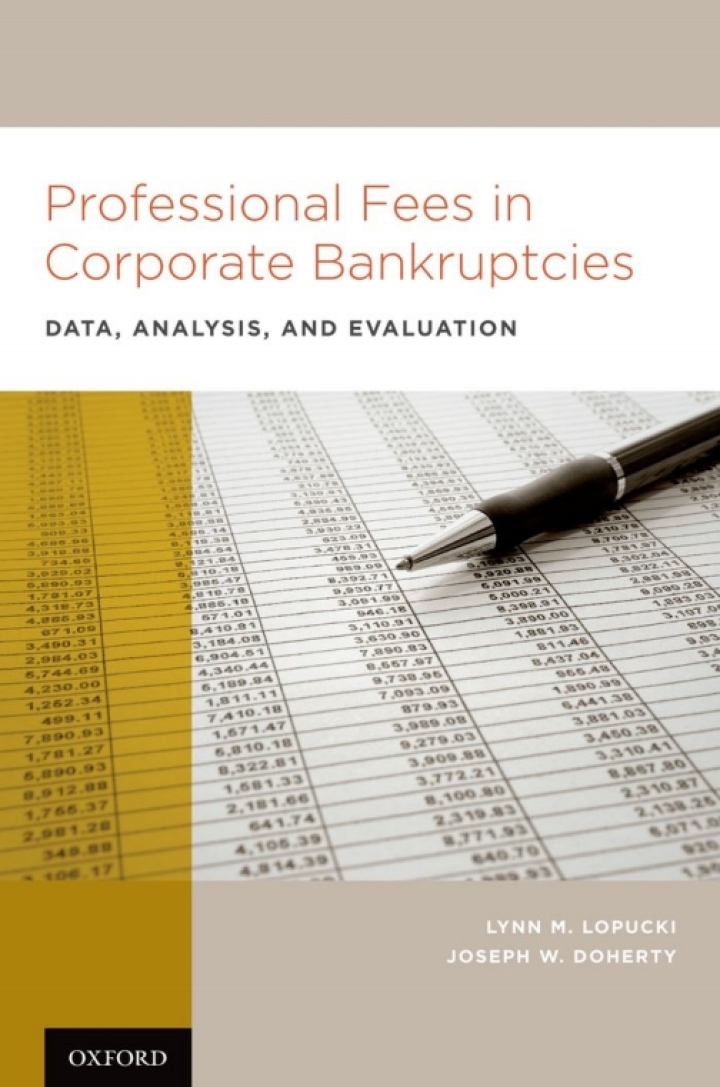Professional Fees in Corporate Bankruptcies Data, Analysis, and Evaluation
$55.25
Attention: This is just ebook, Access Codes or any other Supplements excluded! / File Delivery: Sent Via Email within 24 hours!
SKU: b12d2dbe1c45
Category: Law Textbooks
Description
-
Author(s)Lynn M. LoPucki; Joseph W. Doherty
-
PublisherOxford University Press
-
FormatPDF
-
Print ISBN
9780195337723, 0195337727 -
eText ISBN
9780195337723, 0195337727 -
Edition
-
Copyright
- Details
Bankrupt Enron paid more than a billion dollars in cash to bankruptcy lawyers, financial advisors, and other bankruptcy professionals. The managers of Enron, like those of most bankrupt companies, paid the professionals with other peoples’ money – money that would otherwise have gone to creditors, employees, shareholders, or to saving the companies. To prevent excessive payments, the bankruptcy code and rules establish an elaborate system for public reporting and court approval of professional fees.Armed with the ability to choose among courts that want or need to attract the cases, the professionals have largely taken charge of the fee-control system and rendered it toothless. The professionals ignore ignore the rules and the courts do nothing about it. Objections to fees are rare, and the courts award almost 99% of the amounts applied for. Fees rose at the rate of 9.5% per year from 1998 through 2007. Effective methods for assessing and controlling fees do exist, but it is not in the interests of the courts or the professionals to employ them. Based on a study of thousands of documents from the court files in 102 of the largest cases, bankruptcy expert, Lynn M. LoPucki, and political scientist, Joseph W. Doherty, provide an unprecedented window on the worlds of bankruptcy professionals, professional fees, and their scientific study. Through that window, readers see both a disturbing picture of a legal system in crisis and a hopeful one with opportunities for desperately needed reform.Professional Fees in Corporate Bankruptcies is a scholarly work that employs statistical analysis, and documents its findings to scientific standards. But the authors have written for readers with technical backgrounds in neither bankruptcy nor statistics. This book will be of interest not only to scholars studying professional fees, but also to bankruptcy professionals, judges, policymakers, and anyone interested in the functioning of law-based systems.
Related products
-

Antimonopoly and American Democracy 1st Edition
Rated 0 out of 5$7.80 Add to cart -

Commercial Arbitration in Sweden 3rd Edition
Rated 0 out of 5$146.25 Add to cart -

Constitutional Adjudication in Africa 1st Edition
Rated 0 out of 5$45.50 Add to cart -

Challenges for Humanitarian Intervention 1st Edition Ethical Demand and Political Reality
Rated 0 out of 5$27.62 Add to cart

